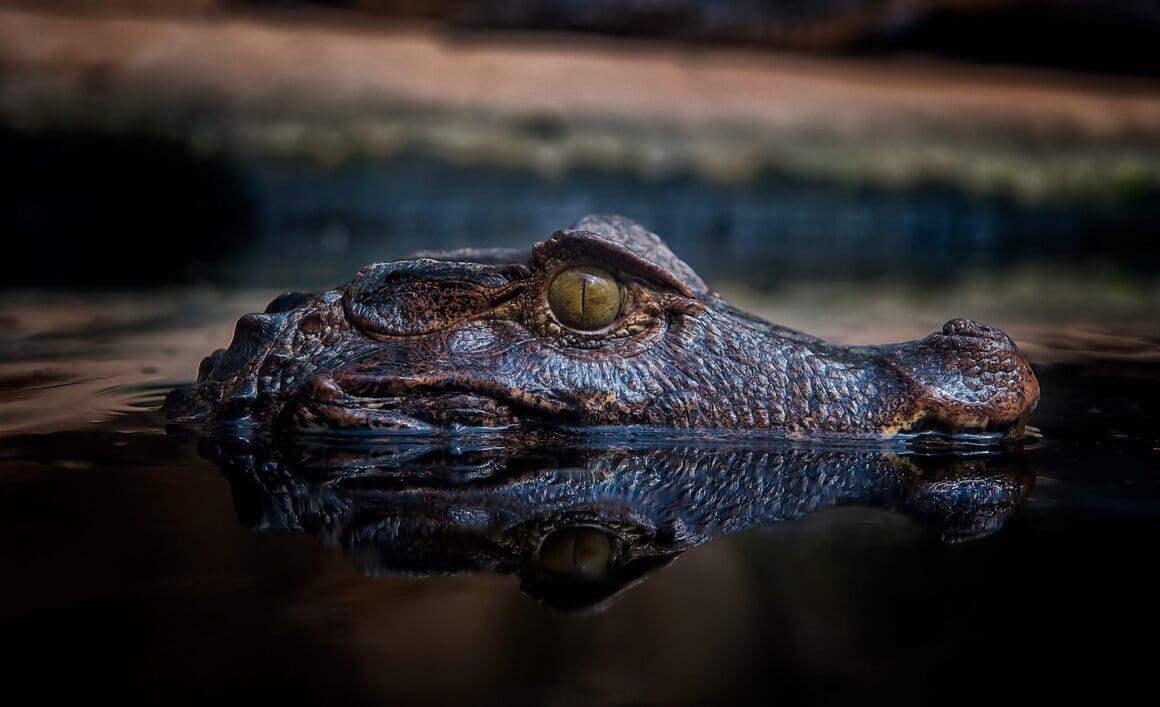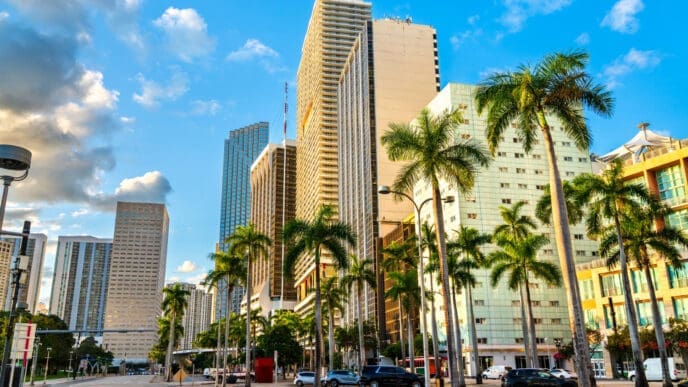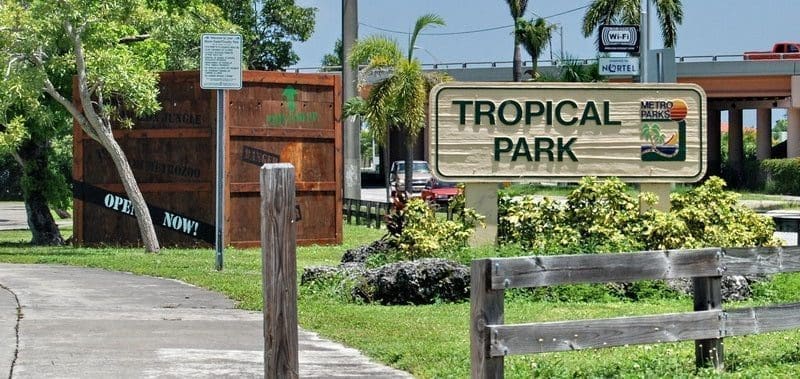Everglades National Park is a must-visit destination for nature lovers and those seeking a break from city life. Located just an hour from Miami, this subtropical wilderness offers vast wetlands, unique wildlife, and stunning landscapes. As an international biosphere reserve, it draws over a million visitors annually who enter mainly through Homestead, but it can also be accessed via the Tamiami Trail. The park’s diverse ecosystem includes manatees, crocodiles, lush hammocks, and pine forests. Visitors can explore by foot, kayak, or canoe, ensuring an unforgettable experience.
1. A Tropical Wilderness Oasis
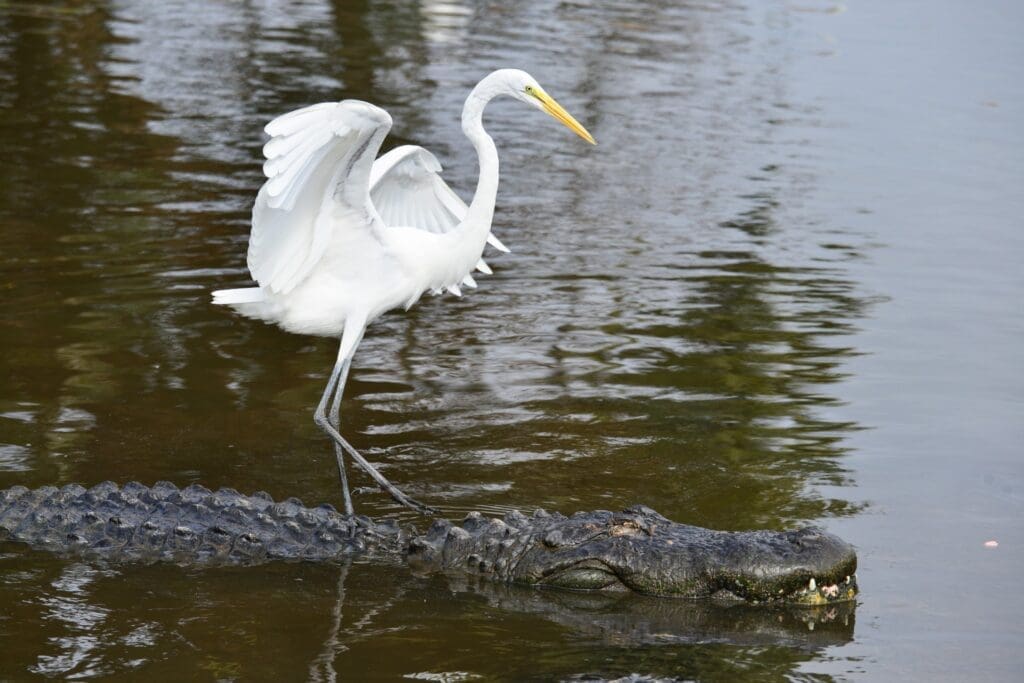
Covering 1.5 million acres, Everglades National Park is the largest tropical wilderness in the United States and a rich, diverse ecosystem. Situated in South Florida, this unique landscape harbors a wide range of plant and animal species, some of which exist nowhere else on Earth. Its famous sawgrass marshes, mangrove swamps, and tropical hardwood hammocks offer essential habitats for numerous wildlife species, positioning the park as an unparalleled natural marvel and a premier destination near Miami.
2. Exploring the River of Grass Ecosystem
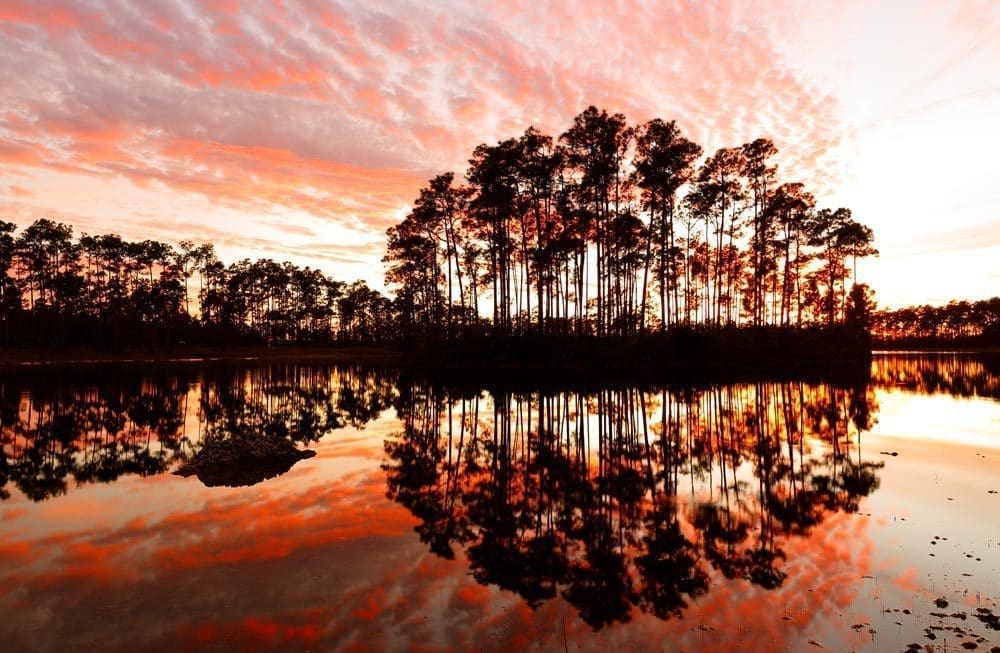
Everglades National Park is renowned for its distinctive ecosystem, often referred to as a river of grass. This unique environment consists of a complex network of slow-moving waters, extensive sawgrass marshes, and dense mangrove forests. The interplay of these diverse habitats supports a rich diversity of flora and fauna, including iconic species like alligators, panthers, and a multitude of bird species. The river of grass is a crucial component of the Everglades, providing vital ecosystem services and serving as a vital habitat for countless species that call this remarkable park home.
3. Preserving Everglades: A Globally Recognized Natural Treasure
The Everglades is celebrated with numerous international honors that affirm its status as a globally significant natural treasure. As a UNESCO World Heritage Site, the park is recognized for its cultural and natural importance, earning protection at an international level. It is also designated as a Wetland of International Importance, emphasizing its vital role in preserving global wetland ecosystems. Furthermore, as an International Biosphere Reserve, the Everglades exemplifies sustainable conservation and embodies the hope for preserving biodiversity and ecological balance. These accolades highlight the Everglades as a pristine wilderness that must be preserved for future generations to enjoy and cherish.
4. Wildlife Wonders

The park is a lively and diverse ecosystem teeming with a variety of fascinating wildlife. Home to iconic alligators, gentle manatees, elusive panthers, and vibrant bird species, the park boasts impressive biodiversity. With over 350 bird species gracing its skies and marshes, it serves as a sanctuary for avian life. These charismatic megafauna and countless other creatures highlight the park’s ecological importance and the need to preserve its rich tapestry of life. Visitors to the Everglades have the unique chance to observe these amazing animals in their natural surroundings, making it a top destination for wildlife enthusiasts and nature lovers.
5. Conservation Efforts for Endangered Species
Everglades National Park acts as a vital sanctuary for several endangered species struggling for survival, including the American crocodile, West Indian manatee, and Florida panther. The park’s diverse habitats offer crucial breeding grounds and shelter for these vulnerable creatures. Conservation efforts within the park are dedicated to protecting and preserving these habitats, as well as reducing human-induced threats like habitat loss and climate change. Through these initiatives, Everglades National Park is pivotal in conserving these species and contributes significantly to broader efforts to protect biodiversity and ensure the long-term sustainability of these iconic animals in their natural environment.
6. Exploring the Outdoor Wonders
Visitors to the park have a plethora of outdoor activities to choose from, allowing them to immerse themselves in the park’s natural beauty. Hiking trails wind through diverse landscapes, offering opportunities to observe wildlife and soak in the tranquil surroundings. Biking paths provide a different perspective on the park’s vast expanses, while kayaking allows adventurers to navigate the waterways and get up close to the park’s unique ecosystem. Birdwatching enthusiasts can spot a variety of avian species soaring overhead or perched in the trees. For a thrilling experience, airboat tours offer a chance to glide across the water and witness the Everglades’ wildlife in action. With so many options available, visitors can tailor their outdoor adventures to suit their interests and explore the wonders of this magnificent national park.
Discover The Everglades By Bike

When you explore the Everglades by bike, you have the opportunity to take a break whenever you want and observe the wildlife. If you don’t want to bring your own bike, you can easily rent one at the visitor center. Remember that the bikes can only be used on the Tram Road and that they’re rented on a first-come, first-served basis.
You can rent bikes at both the Ernest F. Coe Visitors Center and the Flamingo Visitors Center. You can also go a step further and book your bikes in advance on the park’s website – don’t miss out on this great opportunity!
Enjoy the Best Hikes in the Everglades

Are you ready to embark on an exciting exploration of the Everglades? Whether you prefer a leisurely stroll or an extreme day hike, there are dozens of trails for every level. Conquer the monumental 15-mile Tram Road or opt for one of the shorter trails that are less than a quarter mile long! The exciting possibilities await you…
The Bobcat Boardwalk and Otter Cave Hammock Trail are the shorter end of the spectrum, running a half-mile and a mile, respectively, through sawgrass swamps and tropical hardwood hammocks. For a quick and easy wildlife viewing excursion, the nearly one-mile Anhinga Trail is the most popular way to see Everglades fauna up close, especially alligators.
Everglades Airboat Excursions

Experience the rush of wind as you glide over the Everglades swamps on an airboat driven by a powerful fan. Set off on an adventurous journey through the River of Grass, promising an unforgettable experience.
The Tamiami Trail invites you to explore the majestic Everglades in South Florida. Coopertown, Everglades Safari Park and Gator Park offer a variety of exciting airboat tours! All three operators are easily accessible from Miami and give you access to the famous Shark River Slough in Everglades National Park. Take the plunge and explore this untamed piece of paradise for yourself.
Kayaking In The Everglades
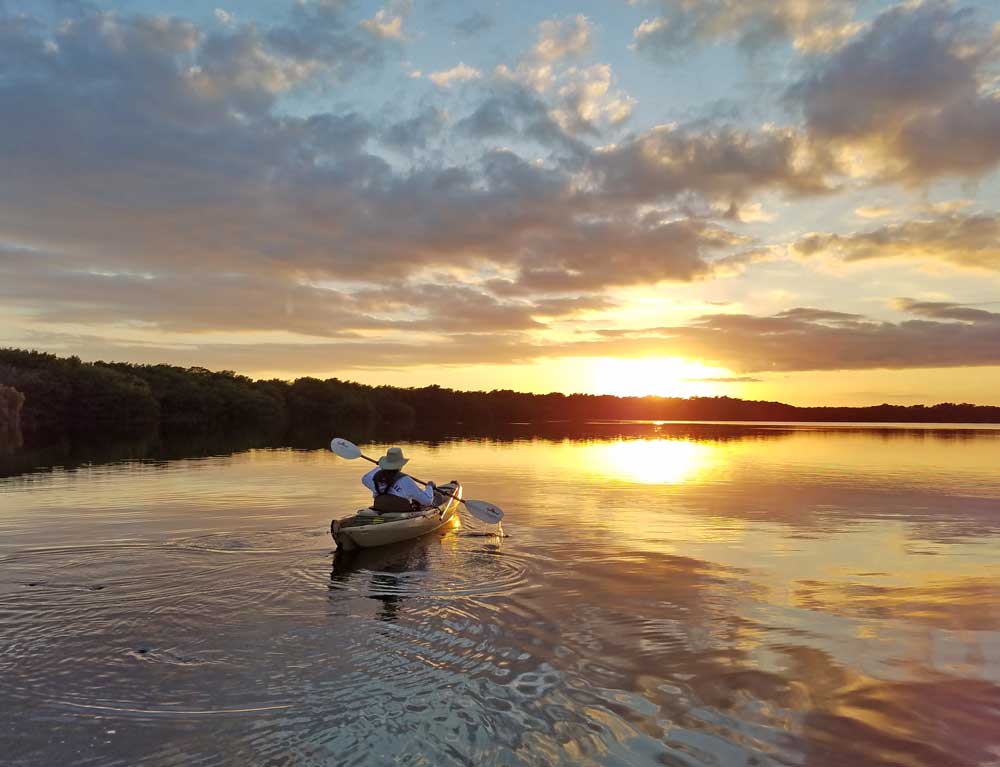
Everglades National Park is teeming with breathtaking landscapes and inviting waterways. From the freshwater marshes and mangrove-lined creeks to the peaceful coves and open waters, a canoe or kayak trip in this area can be an exhilarating experience! Although there are numerous waterways in the backcountry, only two paddling routes – Nine Mile Pond and Hells Bay – are marked for you. So come on by and explore this great area in the glorious freedom of sparkling creeks!
The Wilderness Waterway is a 99-mile waterway that connects Flamingo to Everglades City on Florida’s west coast and offers the opportunity to take the canoe trip of a lifetime. It takes most explorers eight days to complete the route. It’s recommended for experienced paddlers only.
7. The Lifeline of South Florida
The Park plays a vital role in providing water to millions of residents in South Florida. As one of the largest wetlands in the world, the Everglades serves as a natural filtration system, ensuring clean and reliable water for drinking, agricultural irrigation, and industrial use. The park also helps to recharge the Biscayne Aquifer, which supplies water to cities like Miami and Fort Lauderdale. Additionally, the Everglades supports the agriculture industry in the region by providing irrigation for crops such as sugarcane and vegetables. Protecting the Everglades is crucial not only for preserving its unique ecosystem but also for ensuring a sustainable water supply for South Florida’s growing population and economy.
8. Uncovering Centuries of Human Presence
Everglades boasts a rich history that spans over 2,000 years, with evidence of human habitation dating back to ancient times. Archaeological sites within the park reveal the presence of various indigenous tribes who once called the Everglades home, leaving behind artifacts, burial mounds, and other remnants of their civilizations. These ancient inhabitants relied on the abundant natural resources of the Everglades for sustenance, shelter, and cultural practices. By exploring these archaeological sites and studying the artifacts left behind, researchers and visitors alike can gain a deeper understanding of the diverse and vibrant human history that has shaped the Everglades ecosystem over millennia. The park’s historical significance adds another layer of intrigue and appreciation to this unique natural treasure.
9. Everglades Hydrology System
The park is home to a unique and intricate hydrology system that supports a diverse ecosystem. The flow of water through the park starts at Lake Okeechobee and meanders through a series of interconnected marshes, mangrove forests, and estuaries before finally emptying into Florida Bay and the Gulf of Mexico. This constant flow of freshwater is essential for maintaining the delicate balance of the Everglades, providing habitats for a wide variety of plant and animal species. The hydrology system also plays a crucial role in filtering pollutants and maintaining water quality in the region. However, this system is under threat from factors such as urban development and climate change, highlighting the importance of conservation efforts to protect the unique ecosystem of the Everglades.
10. Threats to the Park
The Everglades is facing numerous threats that endanger its delicate balance. Pollution from agricultural runoff, urban development, and industrial activities is contaminating the water and soil, harming the plants and animals that call the park home. Habitat destruction, mainly due to drainage and development projects, is disrupting the natural flow of water, leading to loss of wetlands and biodiversity. Invasive species such as Burmese pythons and melaleuca trees are outcompeting native species and disrupting food chains. Additionally, climate change is causing sea level rise, saltwater intrusion, and more frequent extreme weather events, further straining the park’s ecosystems. Efforts to protect and restore the Everglades are crucial to ensure the preservation of this unique and vital wilderness area for future generations.
11. Educational Programs
The park also offers a variety of ranger-led programs and educational opportunities for visitors of all ages, making it a fantastic destination for learning about the unique ecosystems and wildlife of the area. Visitors can participate in guided tours led by knowledgeable rangers, where they can explore the park’s diverse landscapes and learn about its history and conservation efforts. Wildlife talks provide insights into the fascinating creatures that inhabit the park, allowing visitors to appreciate and understand the importance of preserving these habitats. For young explorers, Junior Ranger activities are available to engage children in fun and interactive learning experiences, encouraging them to become stewards of the environment. These educational programs at Everglades National Park not only enhance visitors’ experiences but also promote conservation and appreciation of this remarkable natural treasure.
12. A Haven for Birdwatchers
Everglades is a haven for birdwatchers, boasting an impressive 350 species of birds within its boundaries. From colorful songbirds and majestic raptors to elusive wading birds and waterfowl, the park offers a diverse array of bird species to observe and admire. Birdwatchers can explore the park’s various ecosystems, including wetlands, mangrove forests, and hardwood hammocks, to catch a glimpse of both resident and migratory birds. Whether you’re a seasoned birder or just beginning your birdwatching journey, Everglades National Park provides a unique opportunity to witness the beauty and diversity of avian life in a natural and protected habitat.
Whether you are a seasoned birder or just starting out, the park’s unique ecosystem is sure to provide unforgettable birdwatching experiences. So grab your binoculars and camera, and embark on a birdwatching adventure in this iconic national park. Below is a list of some of the bird species that can be spotted in Everglades National Park:
- American White Pelican
- Anhinga
- Bald Eagle
- Black-crowned Night Heron
- Great Blue Heron
- Great Egret
- Osprey
- Roseate Spoonbill
- Wood Stork
- Yellow-crowned Night Heron
- Black-bellied Whistling-Duck
- Fulvous Whistling-Duck
- Snow Goose
- Brant
- Canada Goose
- Egyptian Goose
- Muscovy Duck
- Wood Duck
- Blue-winged Teal
- Cinnamon Teal
- Northern Shoveler
- Gadwall
- Eurasian Wigeon
- American Wigeon
- Mallard
- American Black Duck
- Mottled Duck
- White-cheeked Pintail
- Northern Pintail
- Green-winged Teal
- Canvasback
- Redhead
- Ring-necked Duck
- Greater Scaup
- Lesser Scaup
- Common Eider
- Surf Scoter
- White-winged Scoter
- Black Scoter
- Long-tailed Duck
- Bufflehead
- Common Goldeneye
- Hooded Merganser
- Red-breasted Merganser
- Masked Duck
- Ruddy Duck
- Northern Bobwhite
- Wild Turkey
- American Flamingo
- Indian Peafowl
- Pied-billed Grebe
- Horned Grebe
- Red-necked Grebe
- Eared Grebe
- Common Nighthawk
- Antillean Nighthawk
- Common Gallinule
- Chimney Swift
- American Coot
- Limpkin
And many more! Plan your visit to the park and enjoy the wonders of birdwatching in this beautiful and diverse ecosystem.
13. Diverse Flora of the Everglades
The park is renowned for its diverse and unique plant life, showcasing a variety of ecosystems that support a rich array of vegetation. From the iconic sawgrass that dominates the wetlands to the intricate root systems of mangroves and the towering cypress trees, the park’s plant species are not only visually stunning but also play crucial roles in the ecosystem. In addition to these well-known plant species, the Everglades is also home to a variety of orchids, adding a touch of exotic beauty to the landscape. Visitors can explore the park’s trails and waterways to immerse themselves in the lush greenery and vibrant colors of the Everglades, experiencing firsthand the importance of preserving this unique and ecologically valuable environment.
14. Rich History Within Everglades National Park
The park boasts a rich history that includes several significant historic sites. Among these sites are the Nike Hercules missile site, which played a role in the Cold War era defense system, and the Royal Palm State Park, a historic area that served as the nucleus for the establishment of the national park. Additionally, the park features the Nike missile base, highlighting its military history and strategic importance during past conflicts. These historic sites offer visitors a glimpse into the diverse and complex history of the Everglades region, showcasing how the area has evolved over time. Exploring these sites provides a unique opportunity to learn about the park’s past and the ways in which it has been shaped by human activities and events throughout history.
Guided Everglades Tours
Venture into the wilderness during the dry season between December and April for an unforgettable experience on ranger-led excursions! Tourists can embark on an adventure during guided hikes, bike rides, canoe trips, or even an exciting caravan ride. However, the most special part of this experience is the exciting Slough Slogging Tour, better known as Swampwalking – a guaranteed extraordinary escapade!
If you long to experience the remarkable backcountry but lack the skills of a canoeist, you can take advantage of the daily boat tour from Flamingo Harbor, led by knowledgeable conservationists and approved by Everglades Guest Services.

Embark on an encounter with majestic nature and join the Everglades Experience Guided Tour to discover Royal Palm, Nike Missile Site, Pa-hay-okee and more – all from your own car!
Explore the secrets of the park on this half-day adventure! You’ll drive to some of the most fascinating sights, and you can get out at each stop to explore every corner with your guide. Don’t wait – spots for this limited tour are filling up fast, so secure your spot now! With only three vehicles allowed, you won’t want to miss out on this breathtaking ride!
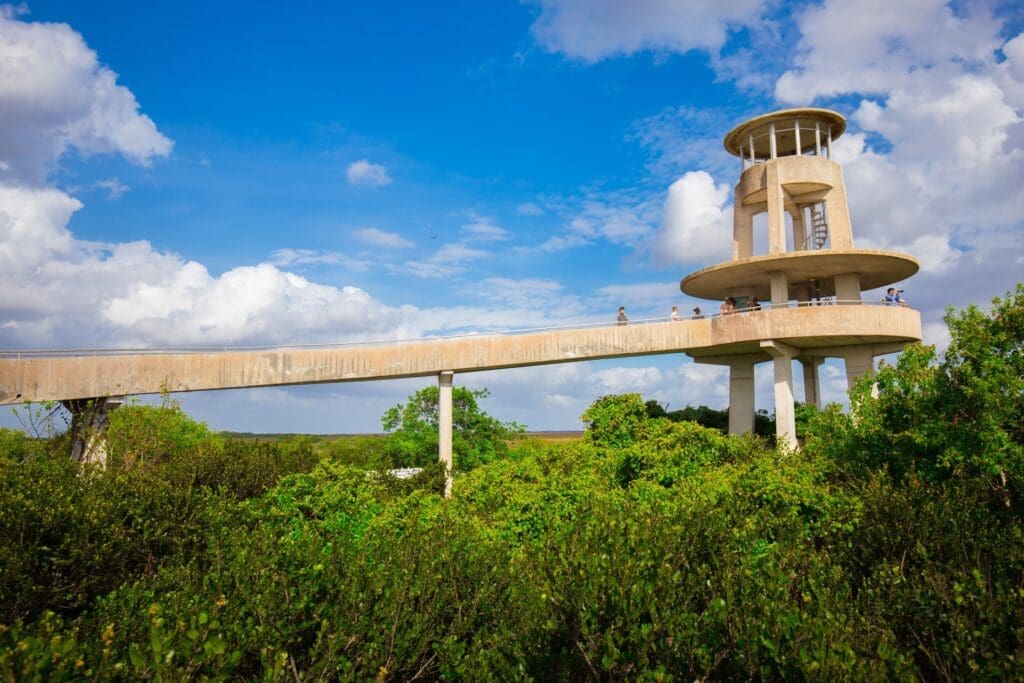
There are many options for guided tours in Shark Valley. For example, you can join a guided streetcar tour offered by Shark Valley Tram Tours, the concession for the park. Led by experienced naturalists, you’ll meet Shark Valley’s wild inhabitants and learn about the park’s history, fauna and flora.
Climb to the top of the observation tower for a breathtaking view of Shark River Slough! Your trip wouldn’t be complete without reserving a spot on the online calendar, so don’t miss out on this great experience.
15. An Angler’s Paradise
The park is a paradise for fishing enthusiasts, offering a diverse range of opportunities to reel in freshwater and saltwater fish in its expansive waterways. Anglers can try their luck at catching a variety of species, including largemouth bass, tarpon, snook, redfish, and more, making the park a prime destination for both novice and experienced fishermen. Whether casting a line from a boat, kayak, or shoreline, visitors can enjoy the thrill of angling amidst the park’s stunning natural beauty and abundant wildlife. With ample fishing spots scattered throughout the park’s marshes, rivers, and coastal areas, anglers can immerse themselves in a memorable fishing experience while also appreciating the unique ecosystem of the Everglades. Grab your fishing gear and head to Everglades National Park for an unforgettable angling adventure.
16. Stargazing Haven in the Everglades
Everglades National Park serves as an ideal location for stargazing enthusiasts due to its remote setting and minimal light pollution, providing an excellent opportunity to observe the night sky in all its splendor. Away from the bright city lights, visitors can marvel at the beauty of the cosmos, spotting stars, planets, constellations, and even the Milky Way with clarity. The park’s tranquil surroundings and vast expanses offer a serene backdrop for stargazing, allowing visitors to connect with the wonders of the universe in a peaceful and natural setting. Whether setting up a telescope or simply gazing up at the twinkling night sky, stargazers can experience a sense of awe and wonder at the vastness and beauty of the celestial world above while enjoying the tranquility of the Everglades.
17. Camping Under the Stars
The park provides camping opportunities for visitors to immerse themselves in the natural beauty and tranquility of the park. With several campgrounds scattered throughout the park, visitors can choose to stay amidst the lush vegetation, near the waterways, or in more secluded areas to experience the unique ecosystems of the Everglades up close. Whether tent camping or RV camping, visitors can enjoy the sights and sounds of nature, participate in outdoor activities such as hiking, fishing, and birdwatching, and witness stunning sunrises and sunsets. Camping in the park offers a chance to disconnect from the hustle and bustle of everyday life, relax in a peaceful environment, and appreciate the wonders of the Everglades after dark. Pack your camping gear and embark on a memorable outdoor adventure in Everglades National Park.
18. Nature’s Wonderland
Everglades is a must-see destination for anyone seeking to immerse themselves in the breathtaking beauty and diversity of the natural world. As one of the most unique and ecologically rich ecosystems in the United States, the park offers unparalleled opportunities to witness a wide variety of plant and animal species in their natural habitats. From the vibrant hues of blooming wildflowers to the graceful movements of wading birds and the mysterious depths of mangrove forests, the Everglades captivates visitors with its stunning landscapes and abundant wildlife. Whether exploring by boat, hiking along trails, or simply taking in the sights and sounds of this enchanting wilderness, a visit to Everglades National Park promises a transformative experience that will leave a lasting impression on all who venture into its captivating embrace.
19. Watching Alligators in the Everglades
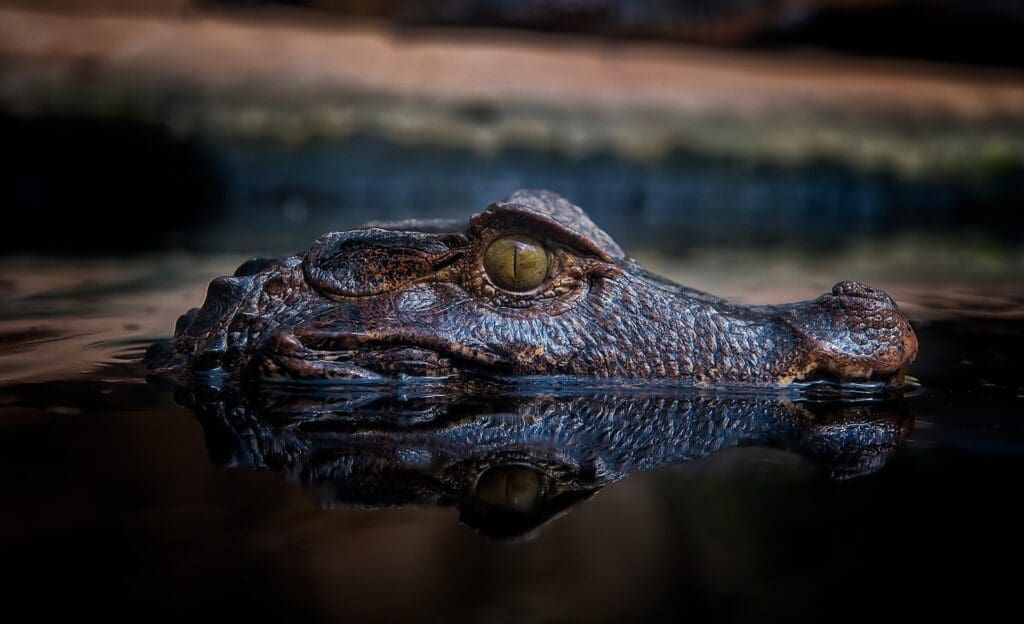
The Everglades are a majestic land teeming with wildlife! They’re home to the famous Florida alligators, the park’s most important species. For an unforgettable experience, be sure to visit the Anhinga Trail, Shark Valley (just 25 miles west of the Florida Turnpike) or the Nine Mile Pond Paddle Loop – these are the ideal places to see these amazing creatures in their natural habitat!
20. Discover the Charming Towns Nestled in and around Everglades National Park
The park is known for its vast wetlands and diverse wildlife, but the charming towns nestled in and around the park offer a unique glimpse into the local culture and history. From the quaint fishing village of Everglades City to the remote outpost of Ochopee, each town has its own story to tell.
Everglades City
Everglades City is a small waterfront community with a rich history as a hub for the area’s early settlers and pioneers. Visitors can explore historic buildings, enjoy fresh seafood at local restaurants, and take a boat tour through the surrounding mangrove forests.
Copeland
Copeland is a quiet farming community located just outside the park boundaries. Visitors can explore the peaceful countryside, visit local farms, and enjoy the tranquility of the rural setting.
Chokoloskee
Chokoloskee is a tiny island village with a population of just over 350 people. It is a popular destination for fishing and boating enthusiasts, with easy access to the park’s waterways and wildlife.
Flamingo
Flamingo is an isolated outpost within Everglades National Park, accessible only by boat or kayak. Visitors can explore the mangrove forests and estuaries, spot a variety of bird species, and enjoy the peacefulness of this remote location.
Homestead
Homestead is a larger city located just outside the park, known for its agricultural industry and proximity to the park’s entrance. Visitors can explore local farms, enjoy fresh produce at roadside stands, and learn about the region’s farming history.
Florida City
Florida City is a small town located at the southern entrance to Everglades National Park. Visitors can find a variety of restaurants, shops, and accommodations here, as well as access to the park’s visitor center and hiking trails.
Ochopee
Ochopee is a tiny community with a population of less than 250 people, known for being home to the smallest post office in the United States. Visitors can stop by the post office, explore the nearby Everglades attractions, and soak in the laid-back atmosphere of this off-the-beaten-path destination.
The Bottom Line Is
Exploring Everglades National Park is truly a remarkable experience filled with unforgettable facts and must-see attractions. From the diverse ecosystem teeming with wildlife to the unique hydrological features like the River of Grass, there is so much to discover and appreciate in this captivating natural wonder. Whether you’re a nature enthusiast, a wildlife lover, or simply seeking a peaceful retreat in the great outdoors, the Everglades offers something for everyone.
So, if you’re looking for a one-of-a-kind adventure that will leave you in awe of the beauty and complexity of nature, look no further than Everglades National Park. With endless things to do, stunning landscapes to explore, and fascinating facts to learn, a visit to this iconic park is an experience that is sure to stay with you long after you’ve left. Don’t miss out on the opportunity to immerse yourself in the wonders of the Everglades and create memories that will last a lifetime.


